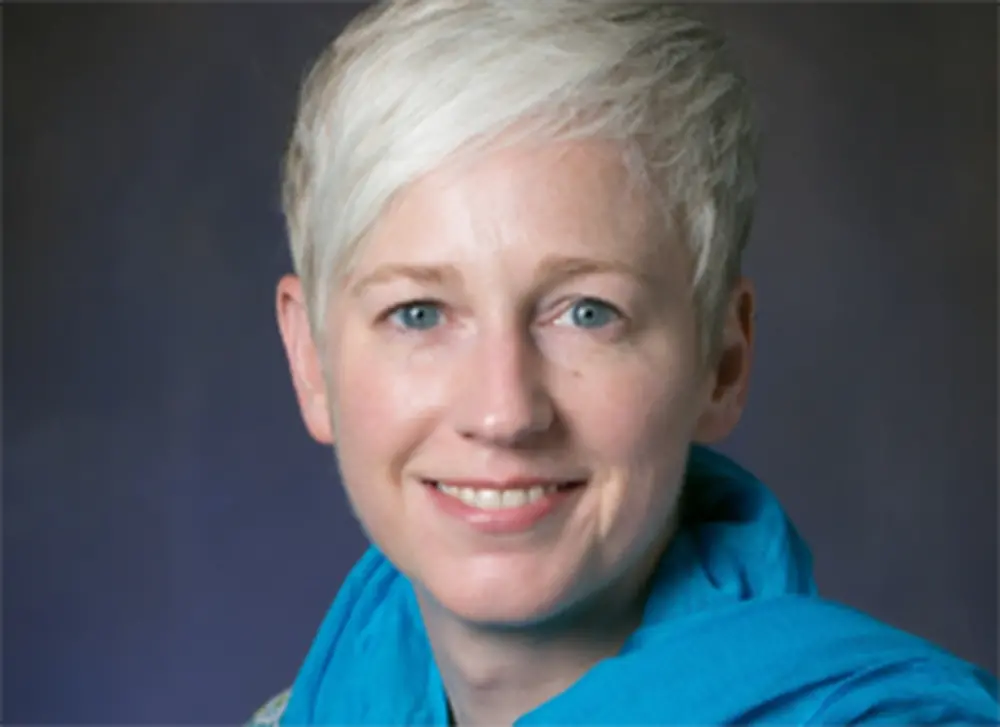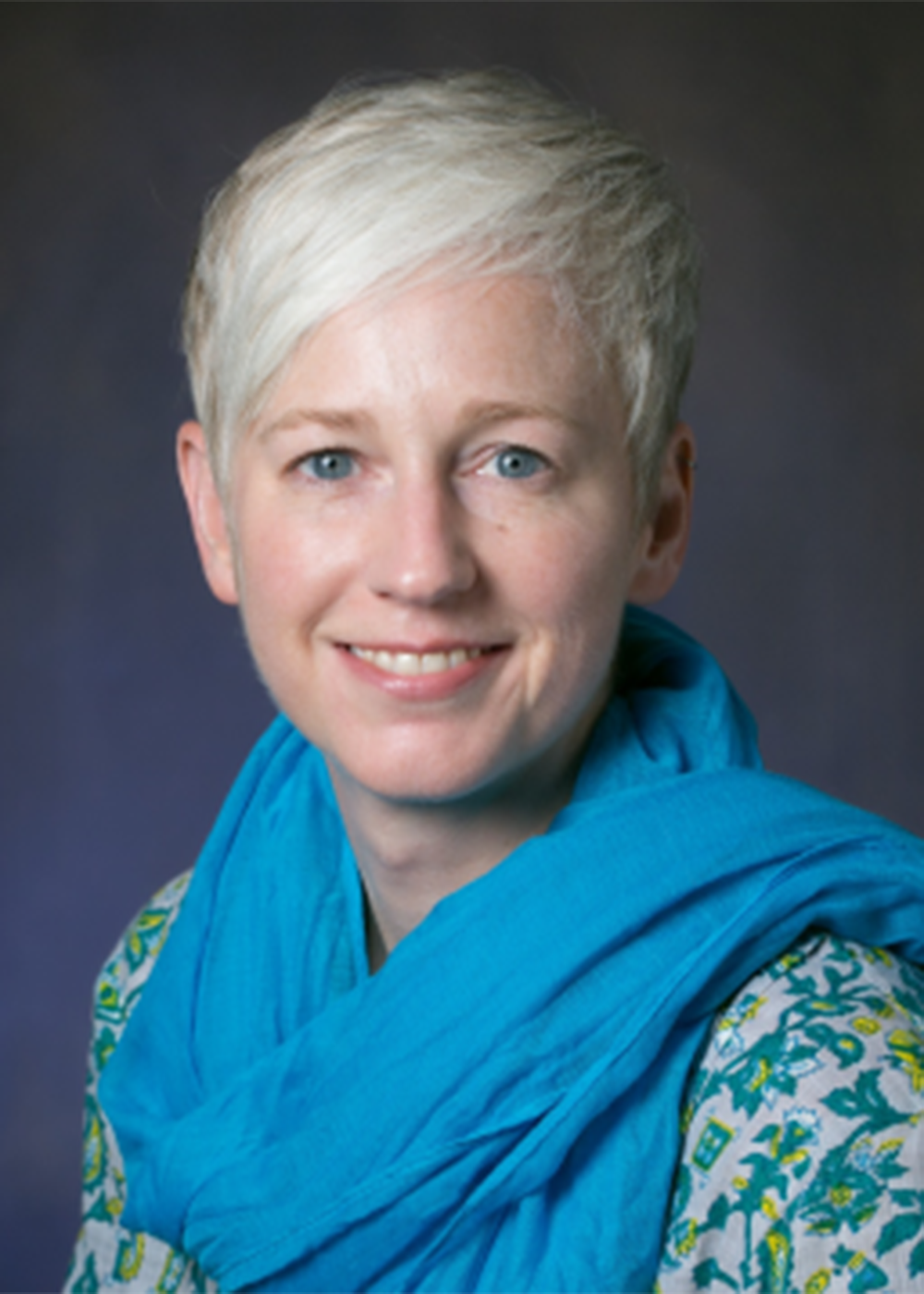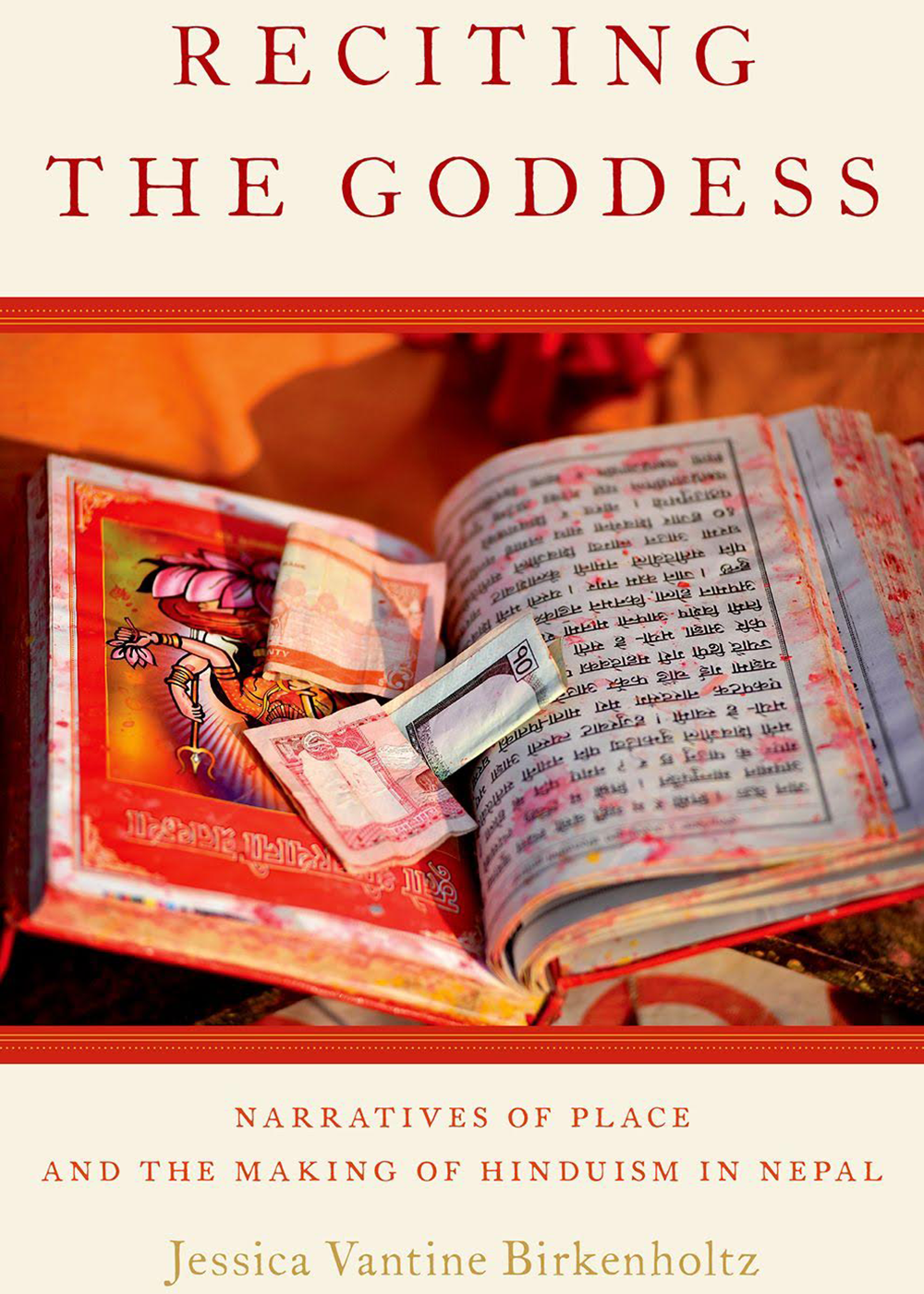

A U of I professor has published the first critical study of one of Nepal’s most cherished narrative traditions.
Jessica Vantine Birkenholtz, professor of religion, recently published “Reciting the Goddess: Narratives of Place and the Making of Hinduism in Nepal” (Oxford University Press). The book focuses on the history and development of the “Svasthanivratakatha” (SVK), which is a Hindu devotional tradition dedicated to the local Nepalese goddess Svasthani. The 31-chapter book dates to the 16th century, when it was but a few handwritten folios in length.
“Reciting the Goddess” has been long in the works. It is based on Birkenholtz’s doctoral research at the University of Chicago, but she said the seed for the project was, unbeknownst to her at the time, planted during an undergraduate study abroad program to Nepal in 1996, when she was studying at Vassar College.
Nepalese Hindus annually recite the SVK over the course of the winter month of Magh (mid-January to mid-December). Families pass down copies of their handwritten SVK texts from generation to generation.
“Nepalis always say that you can find the SVK in every Hindu house in Nepal, and I have found this to be more or less true,” Birkenholtz said. “I was really surprised and fascinated to see that so many of the people that I met in the village I was working in had these old handwritten texts.”
Birkenholtz presents a history of the development of the SVK from the 16th century to the early 20th century. She argues that the SVK’s textual development serves as a lens to observe the making of modern Hinduism in the Himalayas and, specifically, the construction of Nepali Hindu identity vis-à-vis Indian Hindu identity.
Birkenholtz’s project required extensive research at the National Archives and other small archival collections in Kathmandu, where she examined approximately 125 SVK manuscripts from the 16th century to the present. These manuscripts are written in Newar (a local ethnic language), Nepali, and Sanskrit.
Over the last fifteen years, she also interviewed many Nepalis of various ages, locales, and degrees of devotion. Her pairing of textual-archival and contemporary ethnographic research methods and materials is a distinguishing characteristic of the book.

When not studying archival collections of SVK manuscripts, Birkenholtz spent her time in Sankhu, a village on the outskirts of the Kathmandu Valley where Nepalis believe key events in the SVK narratives occurred. Sankhu residents also proved to be a rich source of centuries-old handwritten manuscripts.
“I photographed about two dozen handwritten manuscripts that local residents have just as part of their family tradition. It was extraordinary they allowed me access to them,” she said.
Birkenholtz recalled a specific instance when she asked a friend in Sankhu if she could see his family’s copy of the SVK.
“He started digging around under the bed, and he finally brought out this package wrapped in cloth inside a plastic bag. It was the sacred text,” she said. “He generously lent it to me to examine.”
As she looked through the loose leaf folios, she noticed the copy dated back to 1764.
“That for me will always be one of the most cherished memories I have from my research,” Birkenholtz said. “This treasure, this family heirloom dating so far back was stashed rather so nonchalantly under the bed.”
“Reciting the Goddess” not only studies the SVK and its impact on modern Hinduism, but examines the goddess Svasthani and her iconographic transformations. The role of women in the SVK is also discussed in Birkenholtz’s book, and she examines how that has fueled modern debates on Hindu womanhood.
“It (SVK) is very patriarchal. It promotes gender discriminatory behavior against women,” she said. “In the 21st century where we have all these different models for womanhood and different outlets for agency, there’s a growing number of Nepalis who are rejecting Svasthani as hurtful to women and disempowering for them.”
“There are still many Nepali women who find the stories to be very empowering to women,” she said. “But a growing number see it as very harmful to women’s rights and status. It’ll be interesting to see in what direction that conversation goes.”
Birkenholtz is currently working on an article about contemporary women’s reactions to the tradition and to recent feminist outcries against it.


